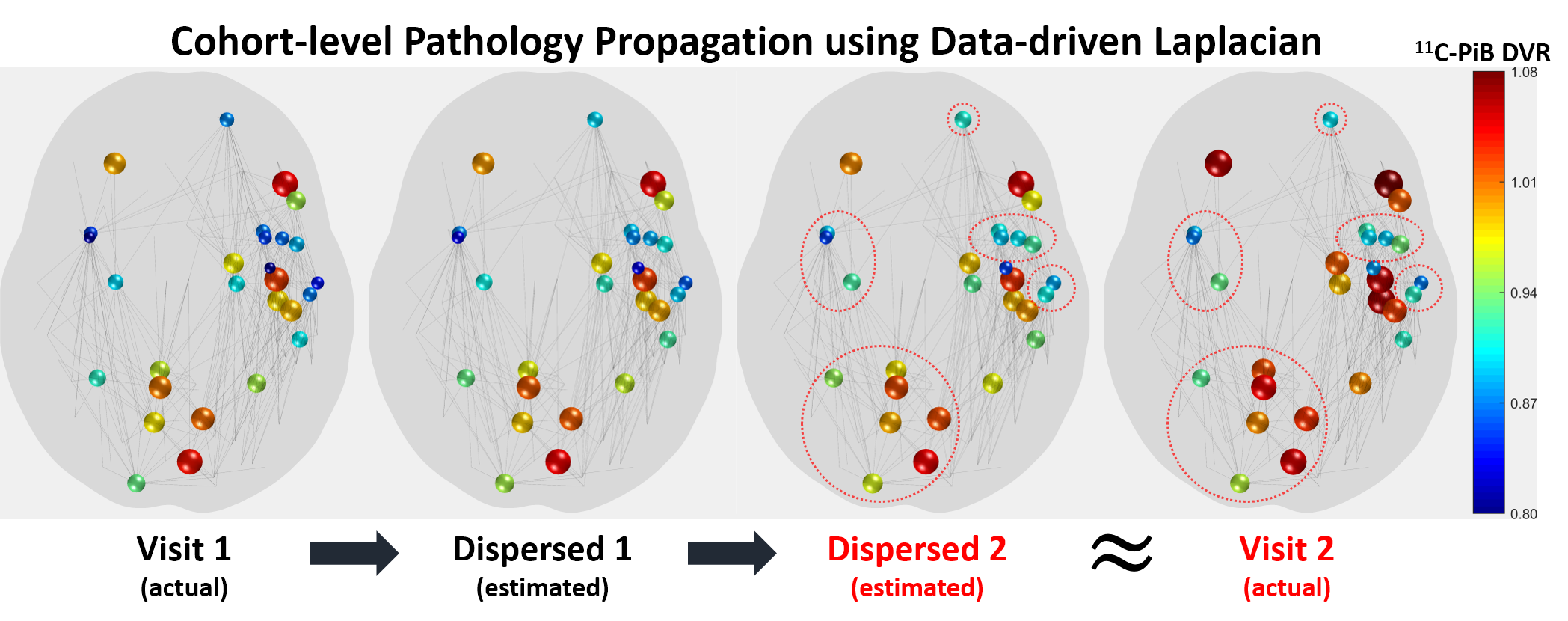Project
Data-driven Propagation Modeling of PET-derived Alzheimer’s Pathology in a Preclinical Cohort
Methods: Cognitively unimpaired participants from the Wisconsin Registry for Alzheimer's Prevention (N=41) underwent two [C11] PiB PET scans separated by approximately 2 years (Visit-1, Visit-2). From each scan, PiB distribution volume ratio (DVR) extracted from 162 parcellated regions determined using the IIT atlas served as the input measures for the propagation model, providing 41 pairs (two longitudinal scans) of 162 dimensional PiB DVRs. Using only these pairs with no prior network information, we derived a data-driven dispersion operator, so-called Laplacian L, which propagates Visit-1 PiB DVRs to Visit-2 PiB DVRs. At the cohort-level, L was used for the heat diffusion on average Visit-1 PiB DVRs to accurately estimate the average Visit-2 PiB DVRs. Additionally, subject-level propagations of individual Visit-1 and Visit-2 PiB DVRs were also derived using the same Laplacian.
Results: The propagation of amyloid pathology is shown in Fig. 1, the heat diffusion using the Laplacian operates on the average Visit-1 PiB DVRs (Visit-1) to estimate the intermediate propagation (Dispersed-1) and then the final propagation (Dispersed-2). The similarity between the final propagation (Dispersed-2) and the average Visit-2 PiB DVRs (Visit-2), highlighted by the red dotted circles, underscore the accuracy of this approach. Subject-level propagation is shown in Fig. 2.
Conclusions: Determining propagation of amyloid pathology in the asymptomatic period of AD is expected to inform upon disease progression. Using only PET scans, we derived a propagation Laplacian operator L and showed both cohort-level and subject-level propagations in preclinical AD. Regions involving substantial propagation from Visit-1 to Visit-2 included right/left temporal poles and right amygdala. With our novel Laplacian inference model, this study is one of the earliest analyses of pathology propagation in preclinical AD.

